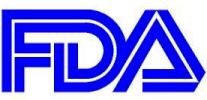
Safe Use Initiative Targets Preventable Harm from Medication Use
The Food and Drug Administration recently announced the Safe Use Initiative, a program aimed at reducing the likelihood of preventable harm from medication use.
"Too many people suffer unnecessary injuries from avoidable medication misuse, errors and other problems," said FDA Commissioner Margaret A. Hamburg, M.D. "The FDA is launching the Safe Use Initiative to develop targeted solutions for reducing these injuries."
Millions of people are harmed every year from inappropriate medication use. Many injuries occur as a result of incomplete access to information about a drug, a patient, or the patient's condition.
Other preventable sources of harm include unintentional misuse of medications, medication abuse, and attempts at self harm. Unintended exposure to prescription medications such as opioid drugs can cause harm, even death, in a single dose, if taken by someone other than the patient who was prescribed the medication.
"Only through coordinated interventions across all sectors of the health care system can we substantially reduce preventable injuries from using medications," said Janet Woodcock, M.D., director of the FDA's Center for Drug Evaluation and Research. "All participants in the health care community have a role to play in reducing the risks and preventing injuries from medication use."
More detailed information on the new program was contained in a report, titled "FDA's Safe Use Initiative - Collaborating to Reduce Preventable Harm from Medicines." The report was released by Hamburg and Woodcock at FDA's annual Science Writers Symposium at the agency's White Oak Campus in Silver Spring, Md.
As outlined in the report, FDA intends to collaborate with health care professionals and other stakeholders to identify drugs and drug classes that are linked to preventable harm. A list of specific problems, cross-sector interventions for reducing harm from these problems, and the metrics for success will be developed.
The report highlights several risk-reduction projects that may benefit from Safe Use collaborations, including evaluating consumer medication information, communicating about the risk of inadvertent overexposure to acetaminophen, implementing safeguards against surgery fires caused by alcohol-based surgical preps, and avoiding contamination of multiple use medication vials.
To further advance the Safe Use Initiative, FDA intends to hold a series of public meetings to gather feedback as the candidate list is being developed and will open a public docket to receive comments on the report and proposed candidate cases.
The agency also made public new FDA guidance for companies that manufacture, market, or distribute over-the-counter liquid medications packaged with dosage delivery devices such as calibrated cups, droppers, syringes, and spoons.
That guidance document, titled "Dosage Delivery Devices for OTC Liquid Drug Products,' was posted for advanced viewing in the Nov. 4 edition of the Federal Register.
Accidental overdoses can be caused by dosage delivery devices that are unclear or are inconsistent with the labeled dosing instructions.
"This new drug dosage guidance document is an example of steps that can be taken to ensure safer medication use," Woodcock said. "Many accidental overdoses result from confusion about exactly how much of a drug to take. Better measuring devices will help patients, parents, and other caregivers use the right amount of these medications--the safest and most effective dose--especially for children."
For more information, click here.